The Year in Me-view
January 6, 2022 | Jim Angehr
A handful of loyal Letters To You readers asked me last month to assemble a “what I’ve read this year” post before the end of 2021. I thought that was a horrible idea, and the answer was “no.”
Mainly because I was planning all along on producing such a list during the first week of January, ’22. I give the people what they want, only slower.
One of the boons from my pandemmy-induced silver linings playbook is that, especially earlier last year with less activities on the calendar, I was able to dive into reading at more than typical length. It was the (one?) way in which 2021 was a Very Good Year.
And so, a few of my fave folios from our festive annum, arranged by category.
Fiction
Haruki Murakami, The Wind-Up Bird Chronicle. I would say that every time is like the first time in reading a Murakami novel, although in my case, this was my first Murakami novel. I enjoy authors that seem to self-generate their own genres; in that vein, The Wind-Up Bird Chronicle is one of the best “magical realism/detective story/lost romance/war memoir/set in Japan” stories that you’ll come across this month.
Zadie Smith, Swing Time. Zadie, I hardly knew ye: you’re one of my favorite contemporary authors, but I believe that I only have one more novel to go from you, namely NW, after this one. Please keep them coming! Ranging from London to West Africa, Swing Time traces the lives of two BIPOC women whose childhood friendship is stretched as their lives diverge into adulthood. No one combines compassion, knowingness, and wit in their prose like Zadie Smith.
Elmore Leonard, Get Shorty. John Travolta may not still gots it, but Chili Palmer lives forever! (Yes, this is the novel on which the 1995 movie was based.) Beach reads don’t get any better.
Essays
Yiyun Li, Dear Friend, from My Life I Write to You in Your Life. Yiyun Li, a Chinese immigrant who came to the U.S. for a career in science but transitioned thereafter to writing, trucks mostly novels, but Dear Friend is her sole collection of nonfiction. I’m not sure that this is a book to enjoy, per se, as one of its central themes is the ongoing allure of suicide, but it’s one that wouldn’t leave me alone.
Claire Messud, Kant’s Little Prussian Head & Other Reasons Why I Write: An Autobiography in Essays. Married to fellow literary critic James Wood, Claire Messud leverages her fascinating backstory–––Canadian mother, Pied-noir father from French Algeria, childhood in Australia, etc.–––into a memoir punctuated with reflections on the books that have shaped her. I’m going to steal this structure for the second volume of my own autobiography.
History
Louis Menand, The Free World: Art and Thought in the Cold War. A massively cross-disciplinary deep dive into the cultural shifts of postwar America, The Free World contained for me numerous that’s-how-we-got-here mini-revelations. Particularly interesting was Menand’s discussion of influence of the 1950’s/60’s New York art scene upon broader currents in the American conversation. (Connected: don’t miss the Jasper Johns special exhibit at the Philly Museum of Art before it shutters!)
Sarah M. Broom, The Yellow House. Intrepid reader that’s still perusing this post, The Yellow House is my book of the year. Not often do you discover a full length, beautifully rendered, and exhaustively researched narrative of a particular house situated only five minutes from where you first grew up–––but The Yellow House, a chronicle of a domicile in a section of New Orleans simply called “New Orleans East,” is my lucky day. And truly, I was lucky: in The Yellow House, black author Sarah Broom recounts the travails of an impoverished family and community that were worlds apart, if only a few blocks from, mine. I can’t think of my own family’s history in the same way after reading Broom’s.
Christianity
Jemar Tisby, The Color of Compromise: The Truth about the American Church’s Complicity in Racism. During 2021’s season of Lent at Liberti Collingswood, we wrestled and reckoned with the realities of systemic racism in our country’s, and sadly, our churches’, past. Tisby’s Color of Compromise was a key text for me in removing blinders, past and present, related to racism.
John Mark Comer, Live No Lies: Recognize and Resist the Three Enemies That Sabotage Your Peace. John Mark Comer is a young(ish) pastor and author that I’ve been tuning into over the last few years. For close to 20 years, he’s ministered in the progressive enclave of Portland, Oregon, which sounds to me a lot like Collingswood. I appreciate the care with which Comer endeavors to form Christian communities of faith that are genuinely counter-cultural yet serve the common good. Live No Lies combines a lot of recent cultural anthropology with pastoral wisdom as we would seek to find freedom in Jesus–––including freedom from competing and counterfeit baseline narratives of secularities both on the right and on the left.
In process. . .
Jai Tolentino, Trick Mirror: Reflections on Self Delusion. Wide ranging essays by a millennial. Good!
Zachary Leader, The Life of Saul Bellow: To Fame and Fortune, 1915-1964. Literary biography of a titan. Long!
Mark Grief, The Age of the Crisis of Man: Thought and Fiction in America, 1933-1973. Spotlight on midcentury writers like Bellow in relation to larger streams of national discourse by a sexy, 40-something white guy. Like me!
There you go: veni, vidi, legi. Et tu?
Let me offer you a standing invitation to take me out for a drink and talk books. Even if seldom at the same time, I’m both cheap and good company.
